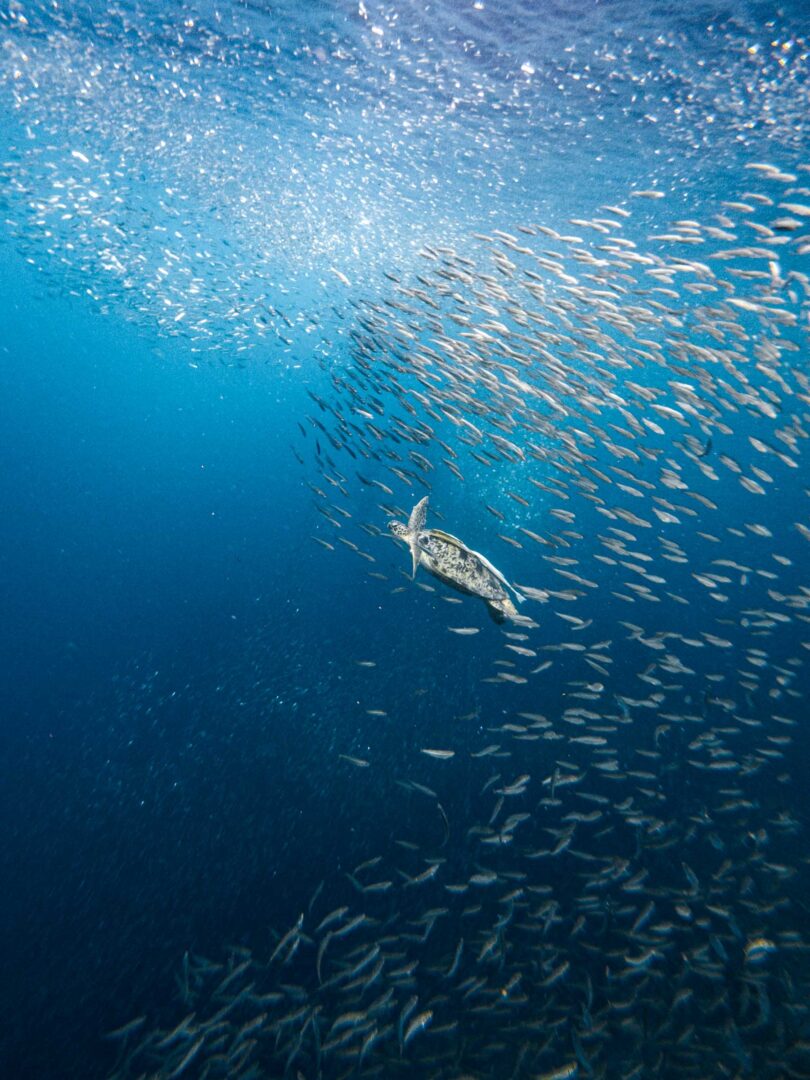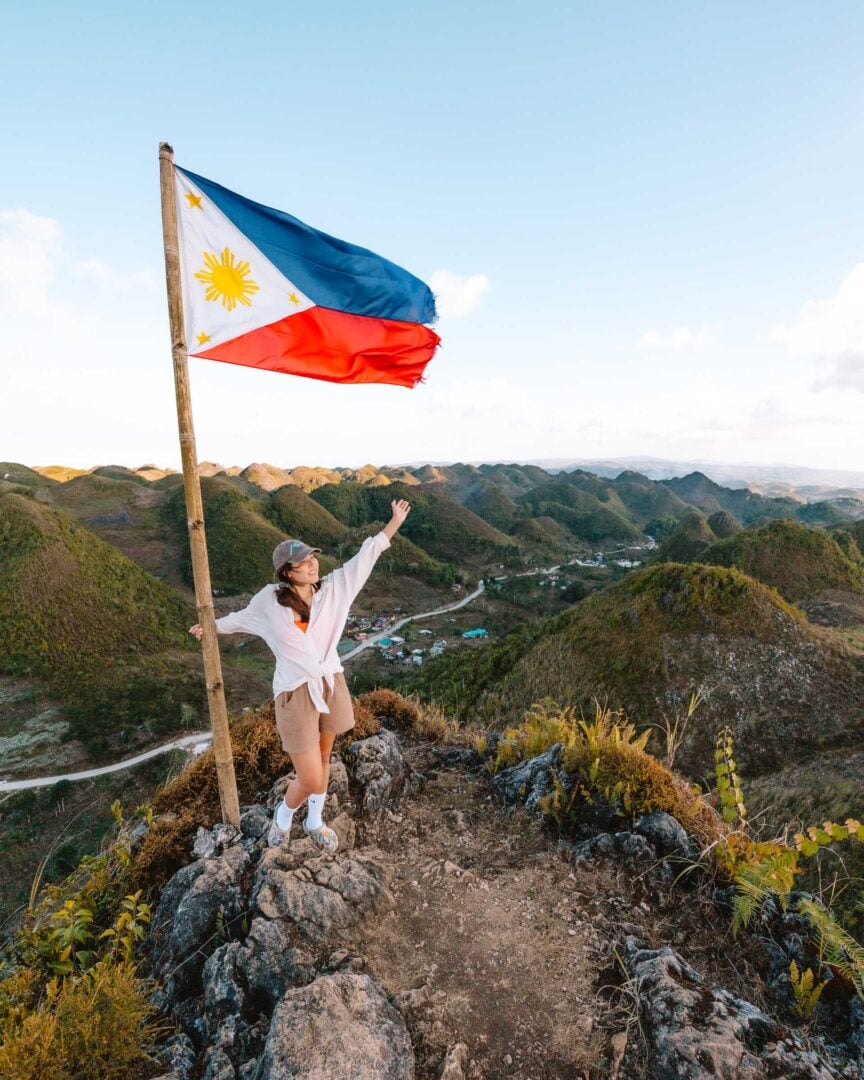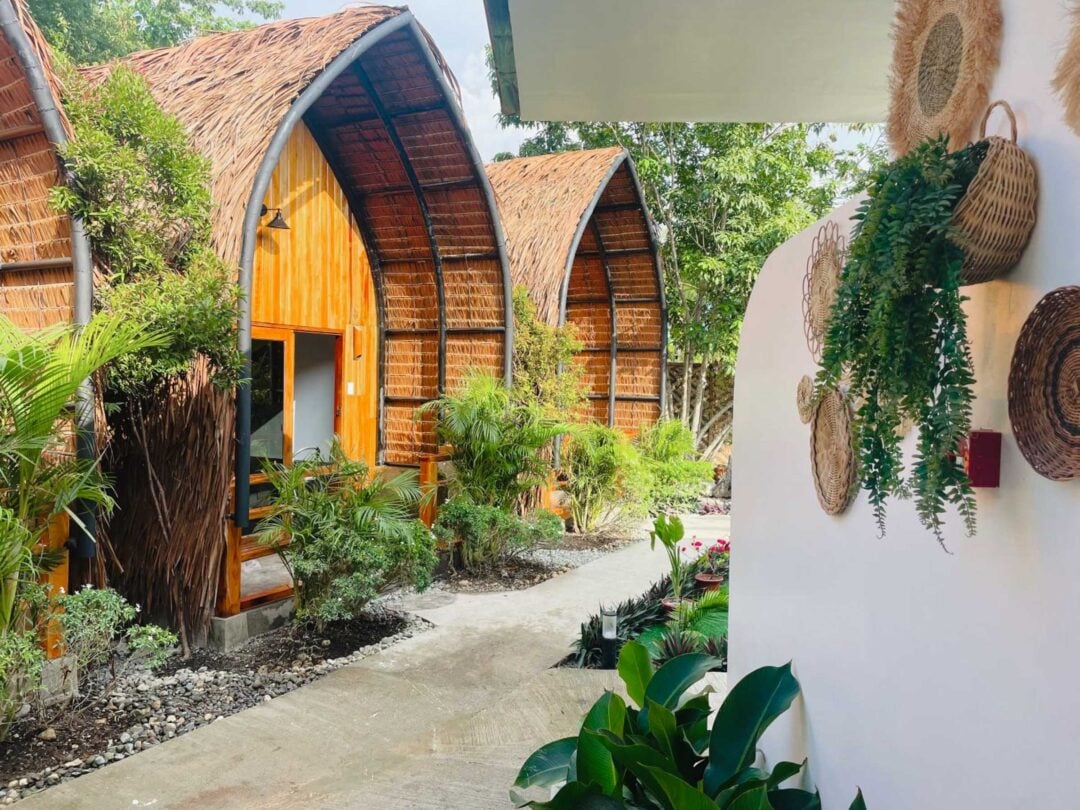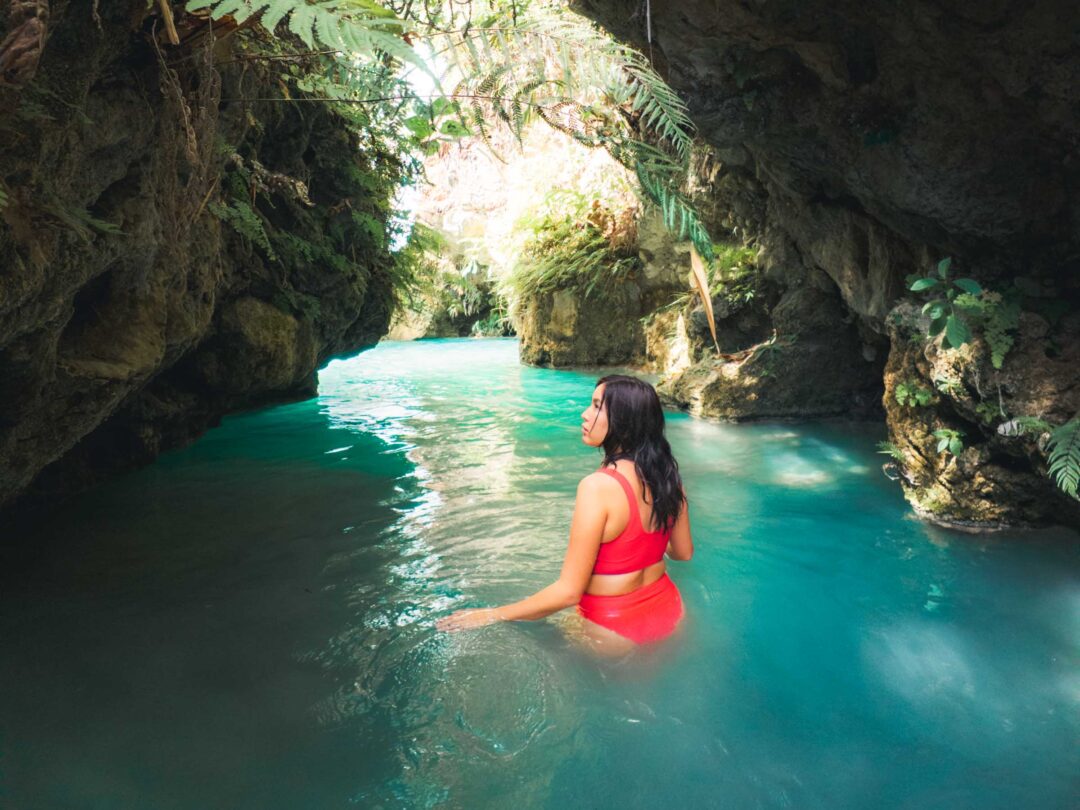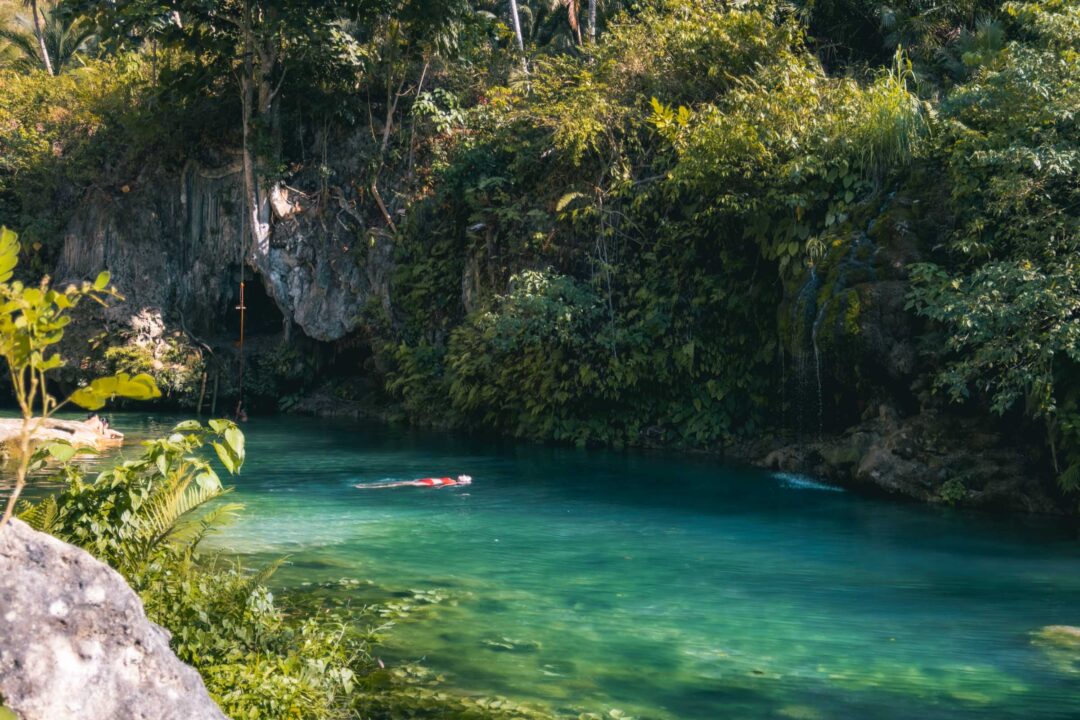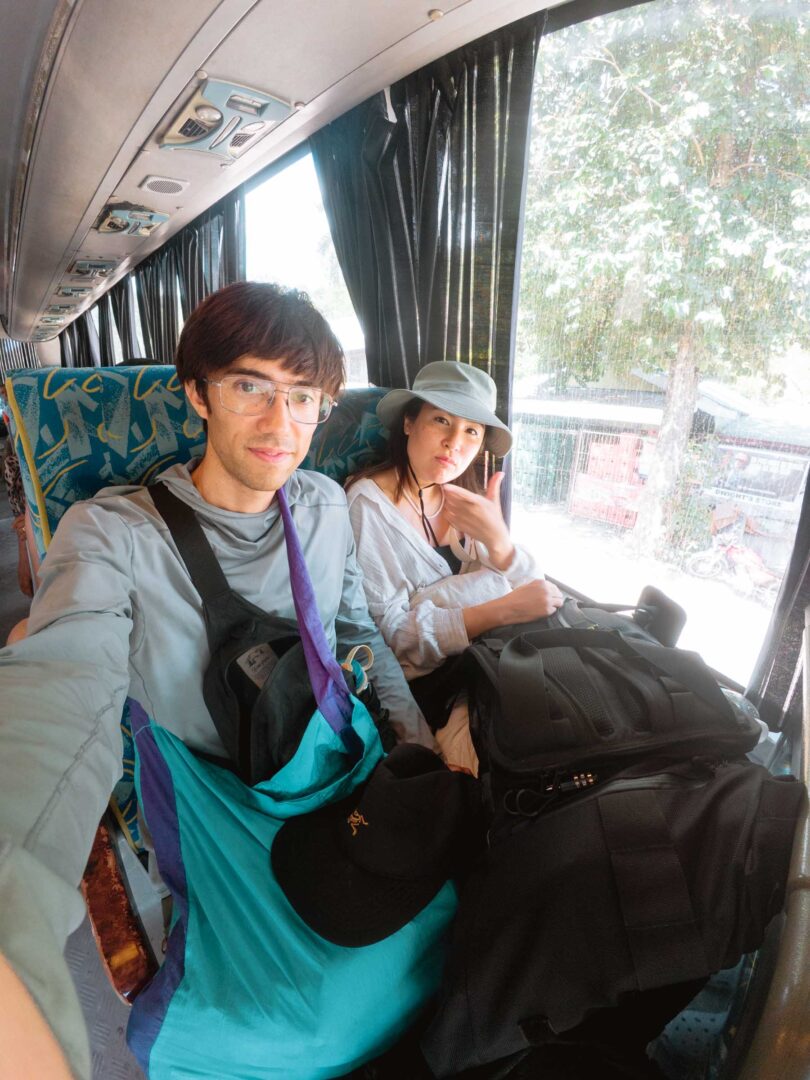The Sardine Run is one of Moalboal’s top things to do for nearly every traveler who visits this coastal town in Cebu.
But despite the name, it’s not a run at all—it’s a swim.
Just off Panagsama Beach, massive schools of sardines gather in shimmering, ever-shifting formations. As you swim among them, thousands of fish move in perfect synchrony, twisting and swirling as if they were a single living entity.
It’s a mesmerizing experience and one of the easiest ways to witness an underwater spectacle without needing a boat or scuba gear.
In this guide, I’ll share everything you need to know about the Moalboal Sardine Run—from how to find it without a tour, what to expect, and tips to make the most of your visit—along with our personal experience swimming with these incredible fish.
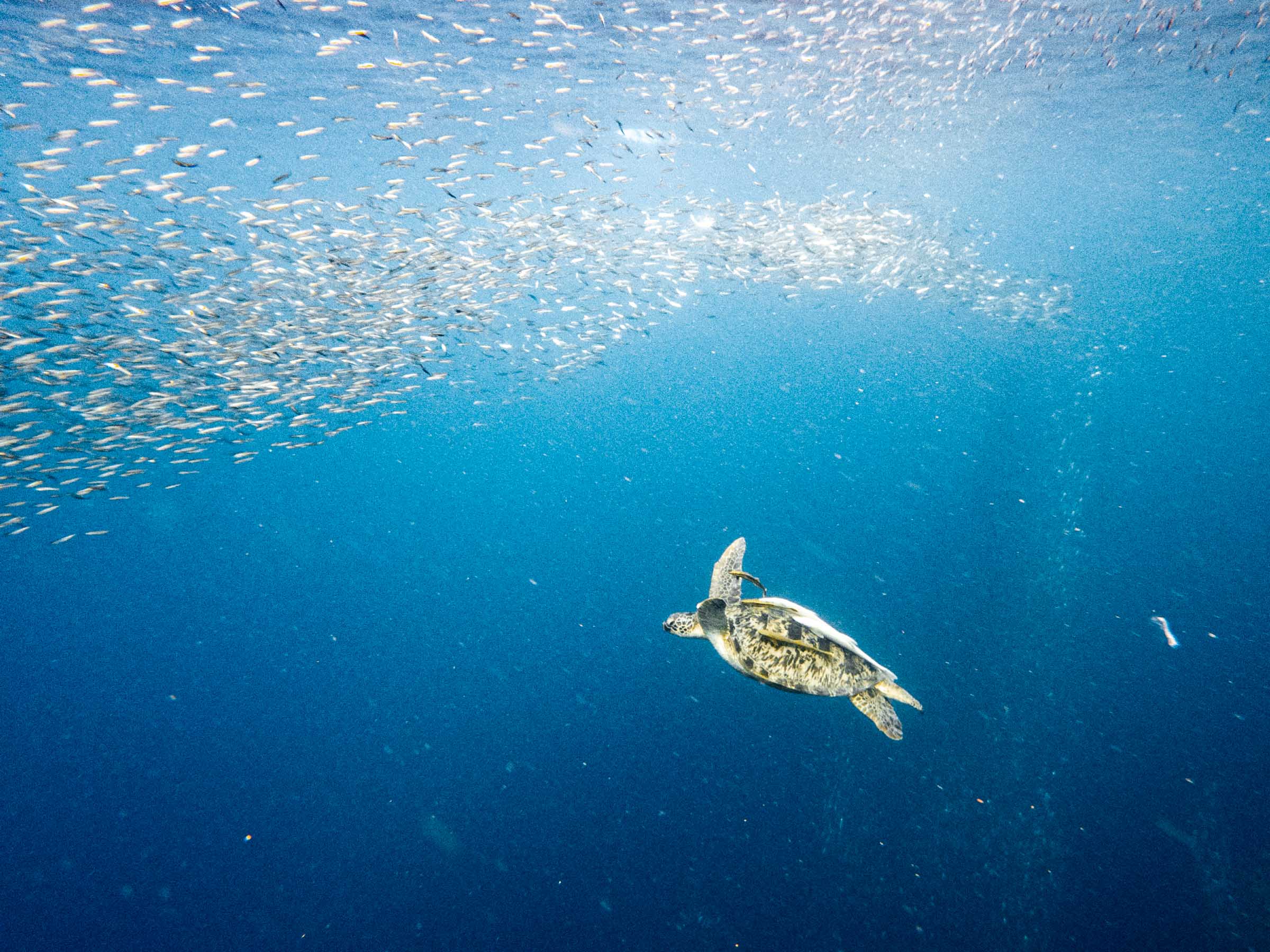
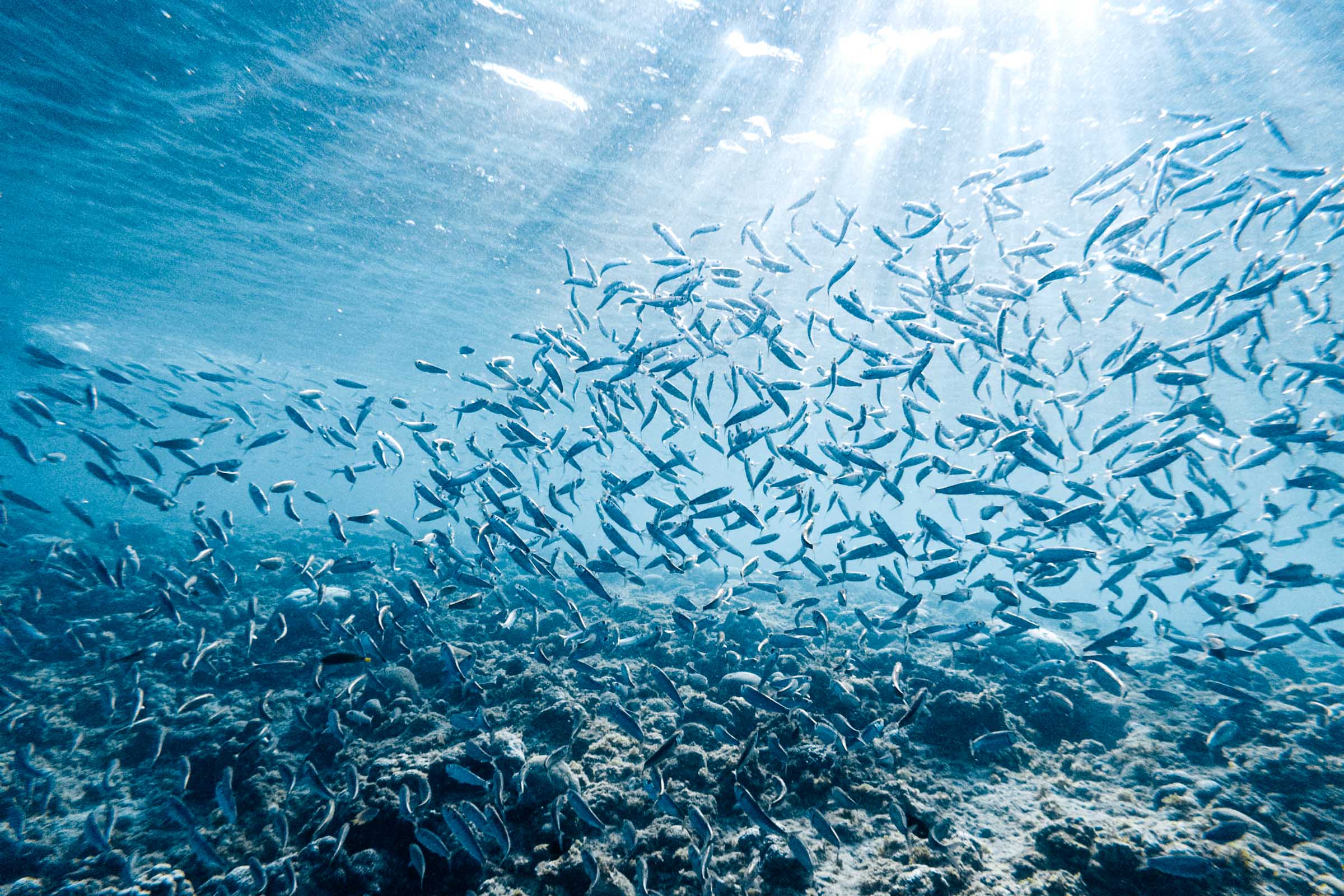
Moalboal Sardine Run Complete Guide
The Moalboal Sardine Run takes place just off the shore of Panagsama Beach in Moalboal, Cebu.
The sardines tend to stay close to shore in the morning when the water is cooler but gradually migrate further out to sea as temperatures rise throughout the day.
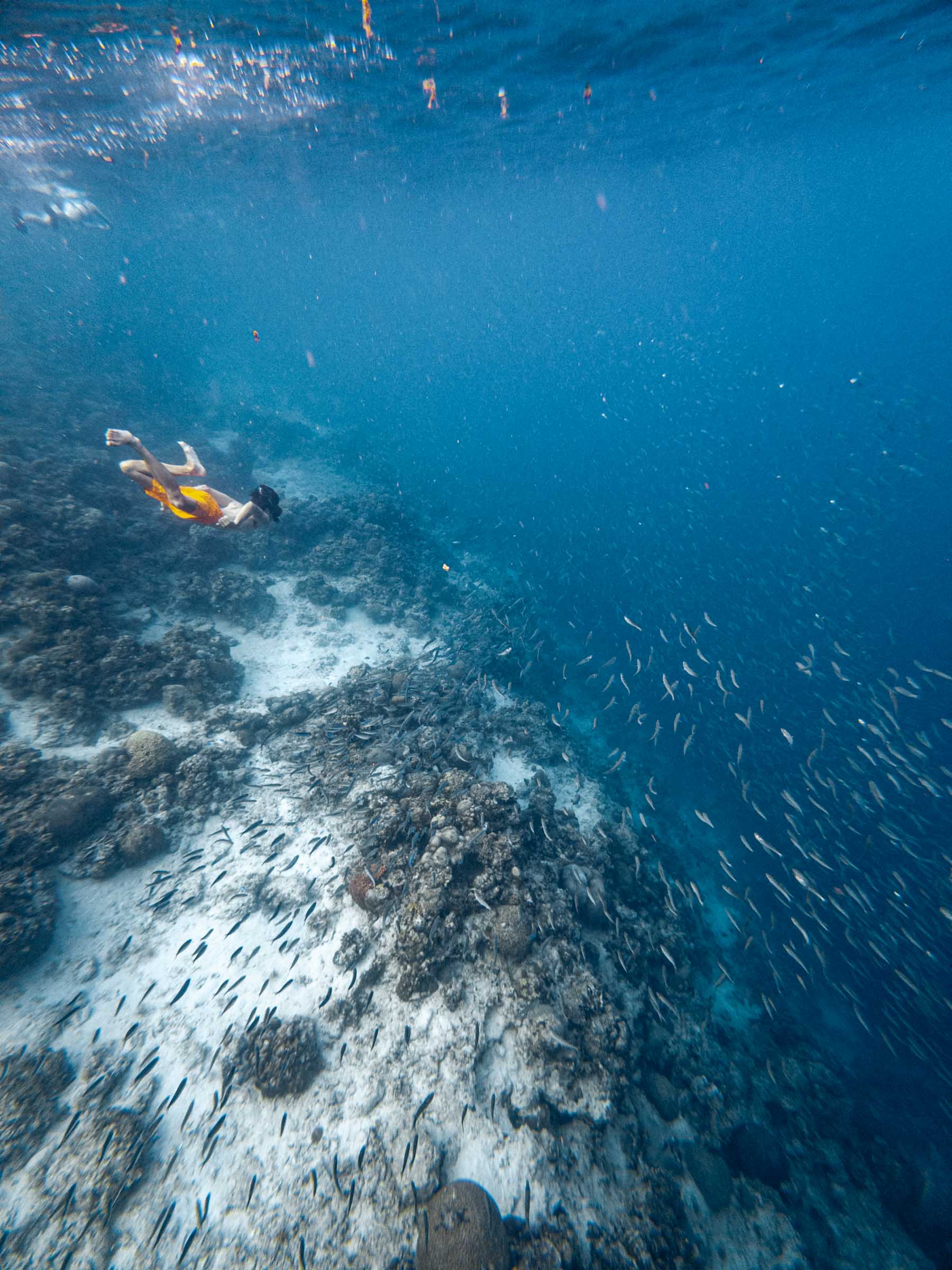
Depth & Visibility
The sardines typically swim at depths of 1 to 5 meters, meaning you don’t need to free dive to see them. You can enjoy viewing the massive sardine balls just by floating on the surface with a snorkel to look underwater.
Season
One of the best things about the Moalboal Sardine Run is that it happens year-round. The sardines don’t migrate, so you can do the Moalboal Sardine Run in any season.
However, weather conditions will impact visibility.
- During the dry season (November to May), you’ll have the best chance at favorable weather when the skies tend to be clear, and the water calm.
- The rainy season (June to October) usually has rougher seas but you can still see the sardines.
For the best chance of seeing the sardines, visit on a sunny morning during the dry season when the waters are calm and visibility is at its best.
Best Time for Photos
If you’re looking to capture underwater photos of the sardine run, the best conditions are when the sun is bright and shining, allowing natural light to penetrate the water. This creates dramatic rays of sunlight piercing through schools of shimmering sardines, making for incredible photos.
During our visit, we had hazy morning weather, so we didn’t get those perfect sunlit shots. However, there were a few moments of direct sunlight, and even without ideal conditions, the experience was still absolutely unforgettable.

Moalboal Sardine Run location
The Moalboal Sardine Run is located just off the coast at Panagsama Beach in Moalboal, Cebu.
I’ll admit… before we got in the water, I had my doubts.
I kept asking myself: Where exactly is the sardine run? What if we don’t find them? Are we even in the right spot?
From the shore, the ocean looks like any other coastline. But you’d never guess that just below the surface, massive schools of sardines are swirling in perfect unison.
And honestly? I’ll say that its harder to NOT find the sardines than it is to find them.
All you have to do is get into the water at this map location and swim about 20 to 30 meters out.
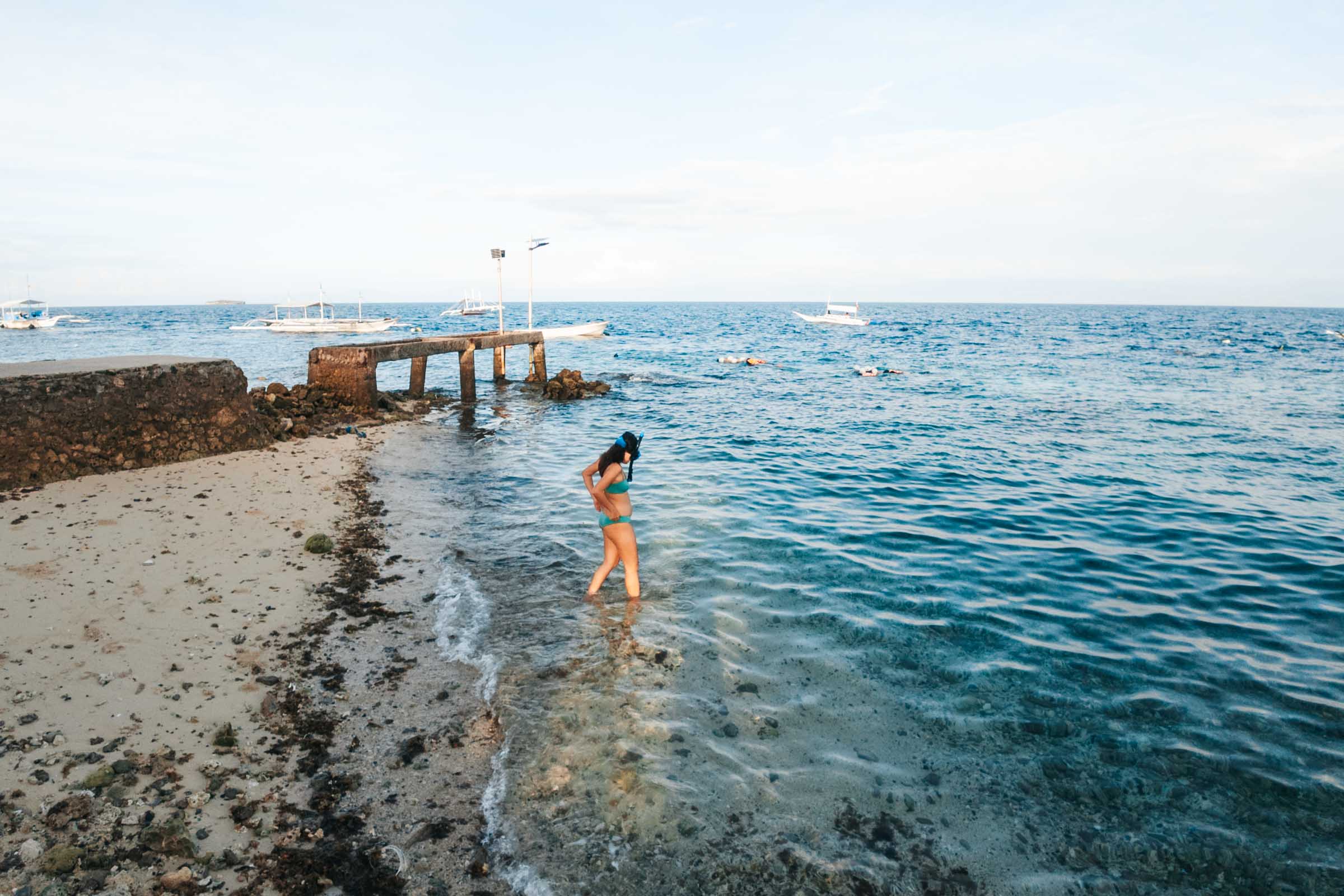
In the morning, the sardines tend to stick closer to shore (I’ll explain why in the next section), but as the day goes on, they gradually move further out, eventually ending up where the ocean floor drops off steeply into the depths. That’s where they tend to gather later in the day.
If you follow the map location below, you’ll be right where you need to be. Just swim out from that location and you’ll find the sardine balls.
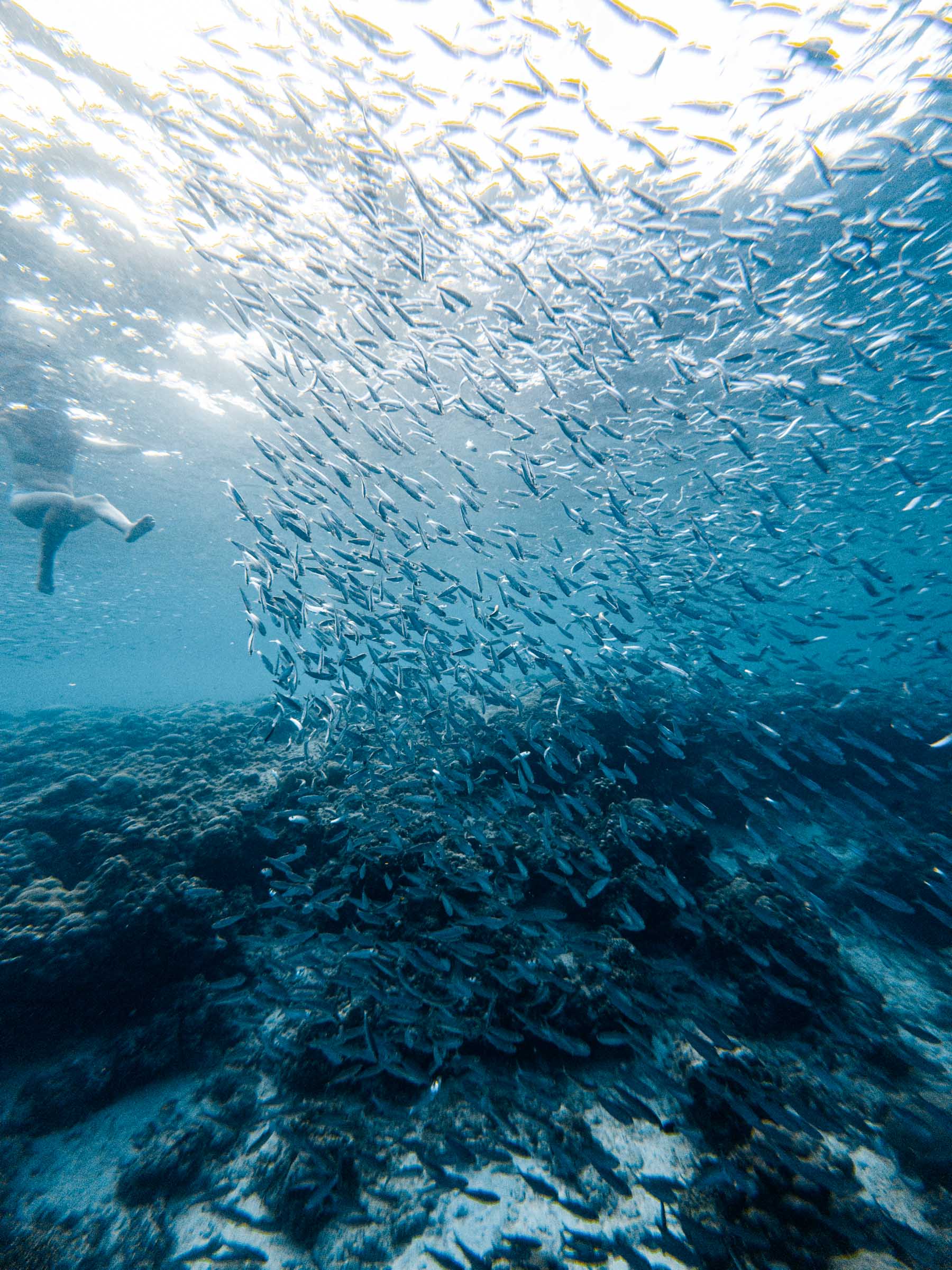
How to get to Panagsama Beach to visit the Moalboal Sardine Run
Finding the Sardine Run is easy, but getting onto the beach itself is where it gets a little tricky.
The main entrance to Panagsama Beach is located along Panagsama Road, right before it curves along the waterfront.
[Click here for a map pin to the main entrance of Panagsama Beach.]
Look for a walkway leading to the ocean. That’s the way we took to get on the beach when we went snorkeling with the sardines.
However, be aware that using this entrance comes with an environmental fee of 100 pesos per person.
When we arrived at 6:30 AM, there was no fee collector, so we unknowingly bypassed the charge. But by the time we left the beach around 7:45 AM, the collector was there. He didn’t stop us as we walked out, but if you arrive later in the day, expect to pay the fee.
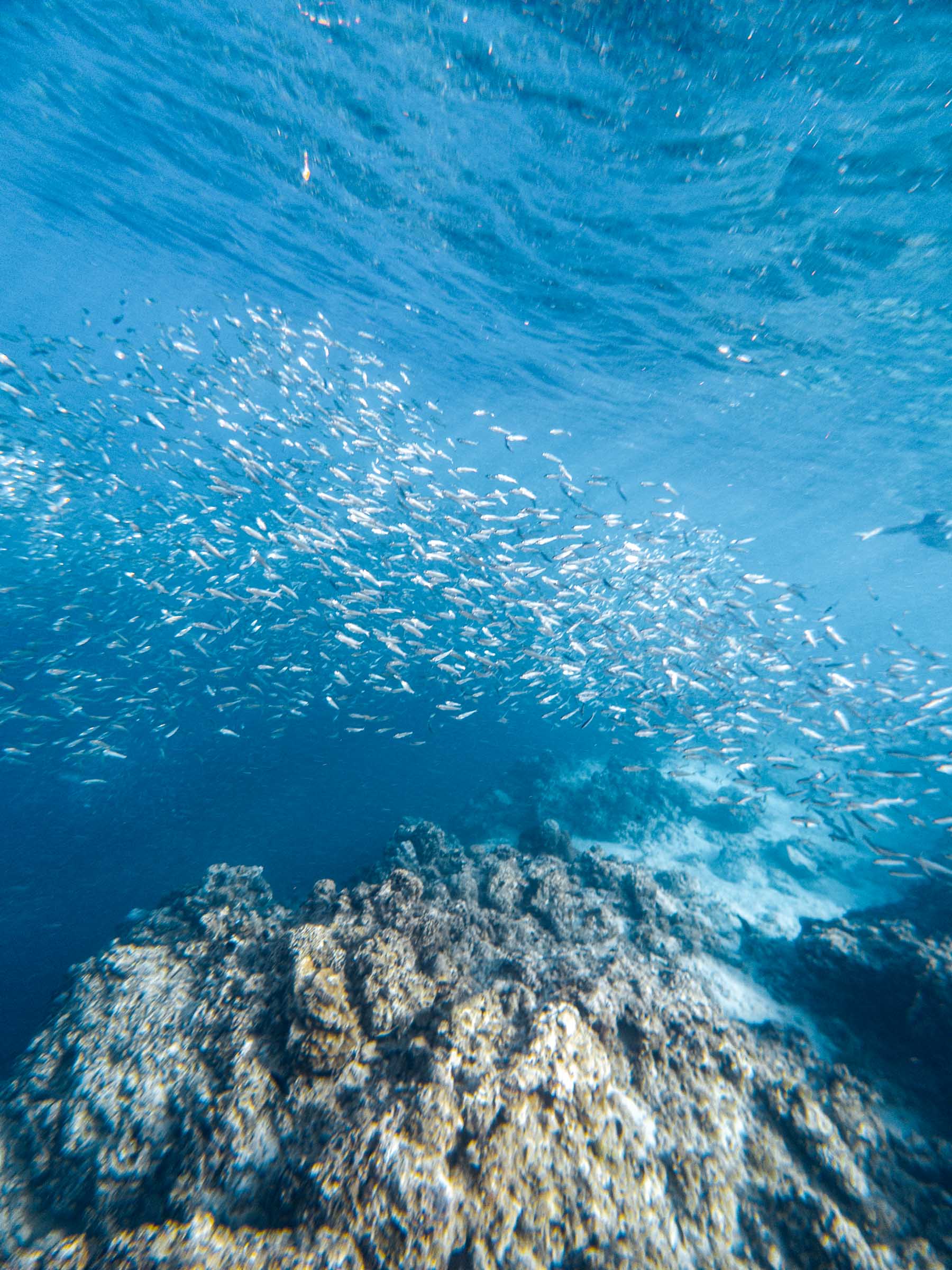
Moalboal Sardine Run best time of day to visit
The best time to experience the Moalboal Sardine Run is early in the morning. Like, as early as you can go. If you’re up for it, heading out at sunrise is ideal.
The best time to see the Moalboal Sardine Run is early in the morning. like as early as you can go. Go right as the sun is rising if you need to.
There are two reasons for this:
- Fewer Crowds – The Sardine Run is one of Moalboal’s top attractions, so by mid-morning, the water fills up with snorkelers, divers, and tour groups. When we arrived at 6:30 AM, we had the entire area nearly to ourselves. But by the time we left an hour later, the crowds had started arriving.
- Water temperature – Sardines prefer cooler water, so in the morning, when temperatures are lower, they stay closer to shore. As the day heats up, they migrate further out into deeper waters where it’s cooler.
We saw the sardine migration firsthand. When we first got in in the water in the morning, the sardines were easy to find near the shore, but by the time we got out, they had moved much further out in the sea.
That said, if you visit later in the day, finding the sardines is still easy. Just look for the crowds. Wherever you see a cluster of snorkelers and divers, that’s where the sardines will be.
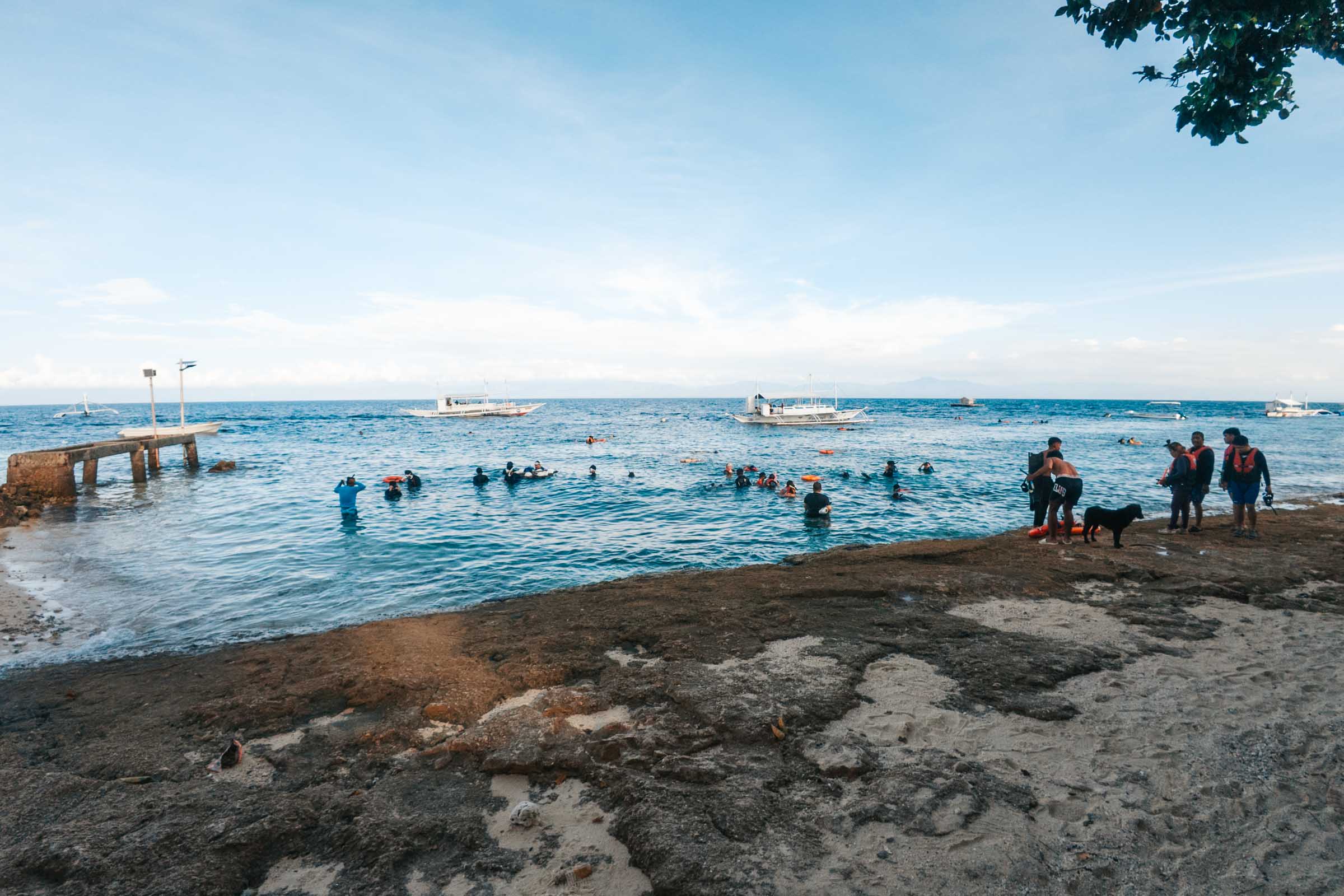
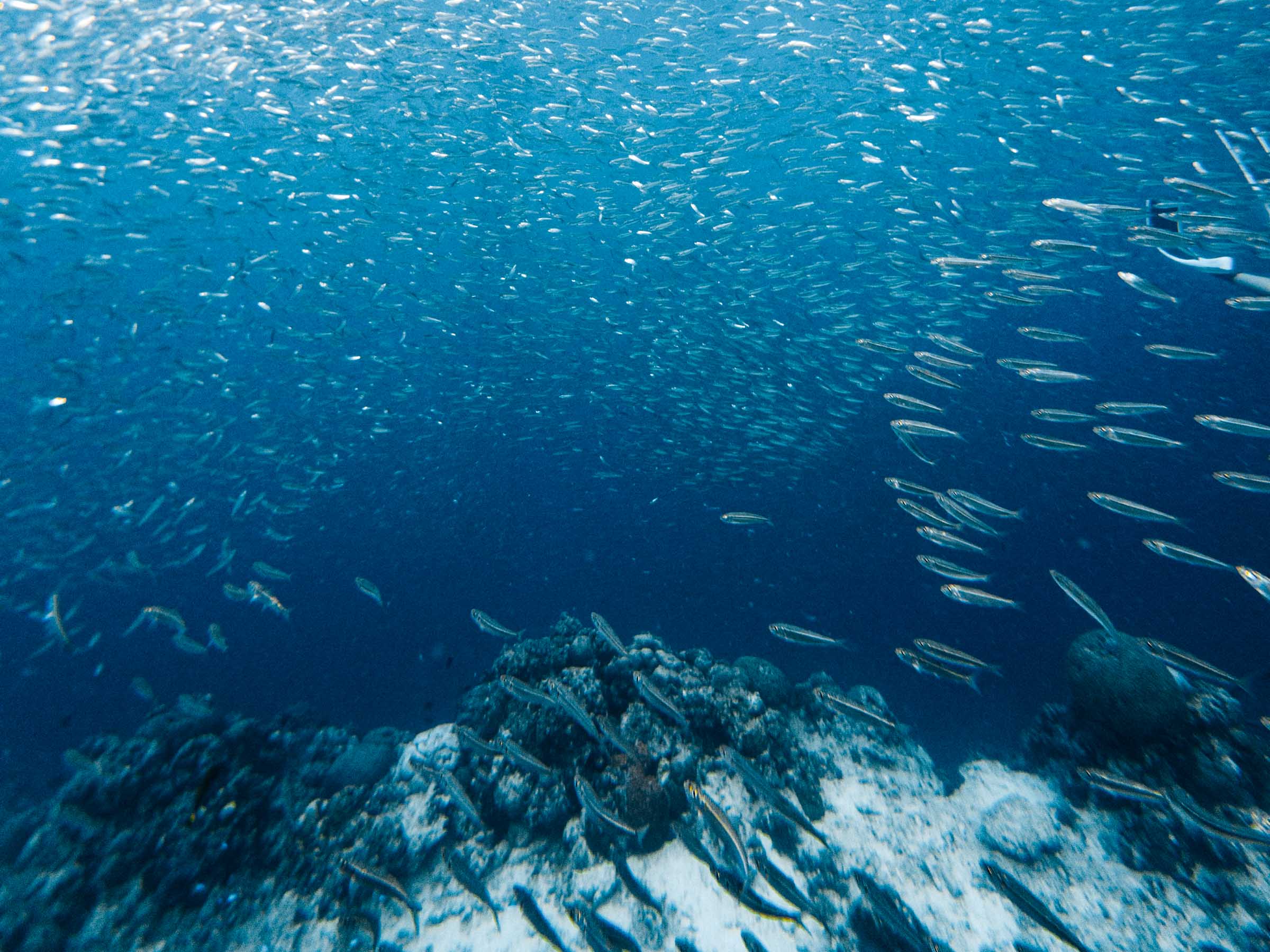
Do you need a guide for the Moalboal Sardine Run?
No, you don’t need a guide to find the Moalboal Sardine Run. The sardines are easy to find at Panagsama Beach. Just swim out far enough, and you’ll likely bump into them, just like we did.
If you visit the Moalboal Sardine Run on your own, then your only cost is a 100 peso per person environmental fee to access Panagsama Beach.
If you’re going to the sardine run without a guide, I recommend heading out before 7 AM. Here’s why:
- The sardines stay closer to shore in the early morning when the water is cooler, making them easier to find.
- You’ll have a better chance of having the sardine run all to yourself before the crowds arrive.
One important thing to note: If you plan to go early, bring your own snorkel gear, or rent one the day before. Most rental shops and stalls don’t open until later in the morning, so finding a rental as the sun is rising might be tricky.
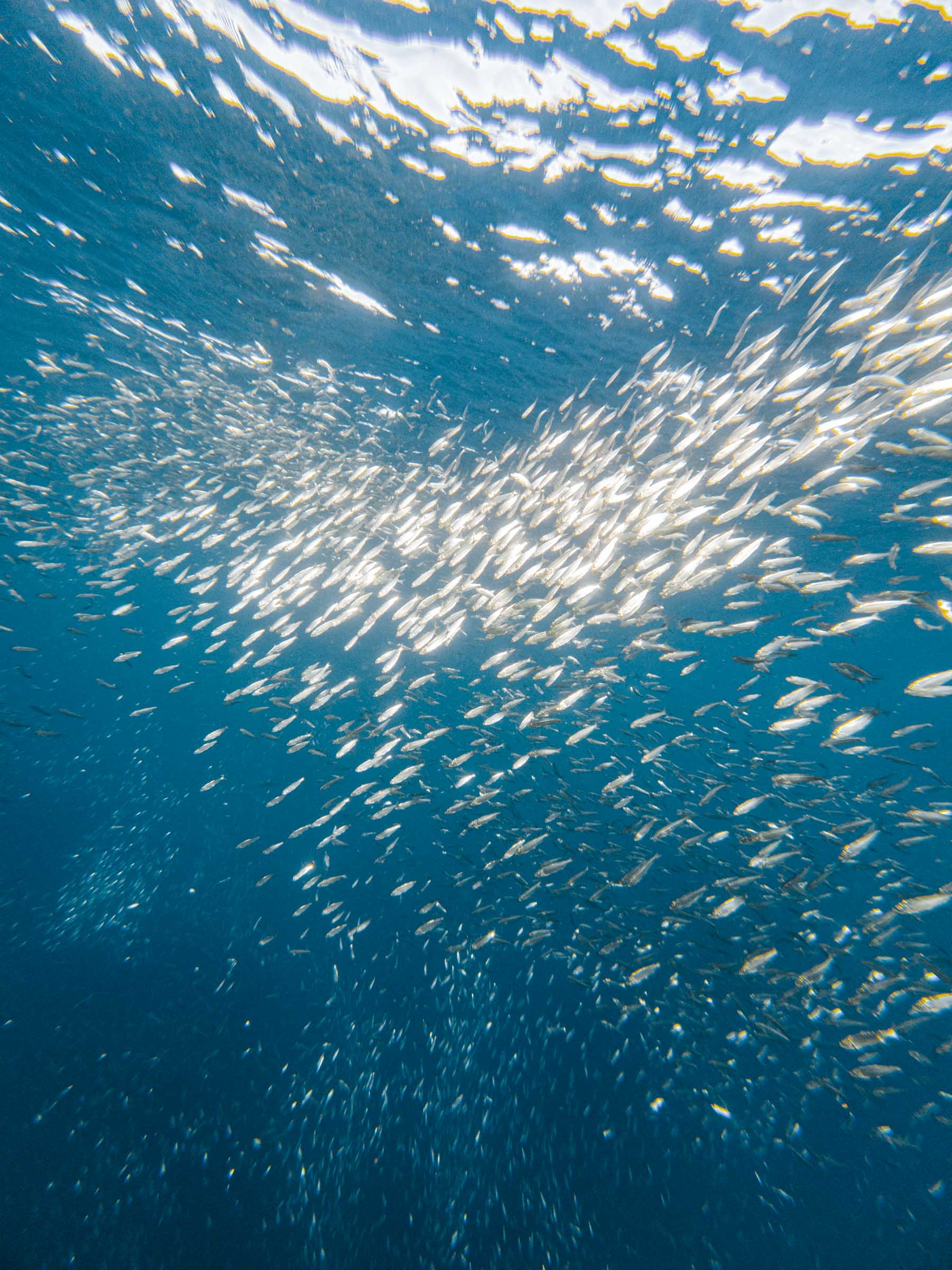
Moalboal Sardine Run: Our experience
Our adventure at the Moalboal Sardine Run started early in the morning.
At 6:00 AM, to be exact.
The alarm went off, and we were on a mission. We threw on our swim clothes, grabbed our snorkels, and headed straight out the door.
Luckily, we were staying at 3 Sisters Guest House 2, just a short 10-minute walk from Panagsama Beach. As we stepped onto the beach, we unknowingly passed the environmental fee booth, unmanned and vacant. A nice little perk of arriving early.
We walked south along the beach until we got to a busted jetty. That’s where we set down our towels, put on our snorkels, and swam out into the water, in search of sardines.
And it didn’t take us long to find them.
About 20 meters offshore, Chloe was the first to spot them—a sardine ball, hovering just above the reef.
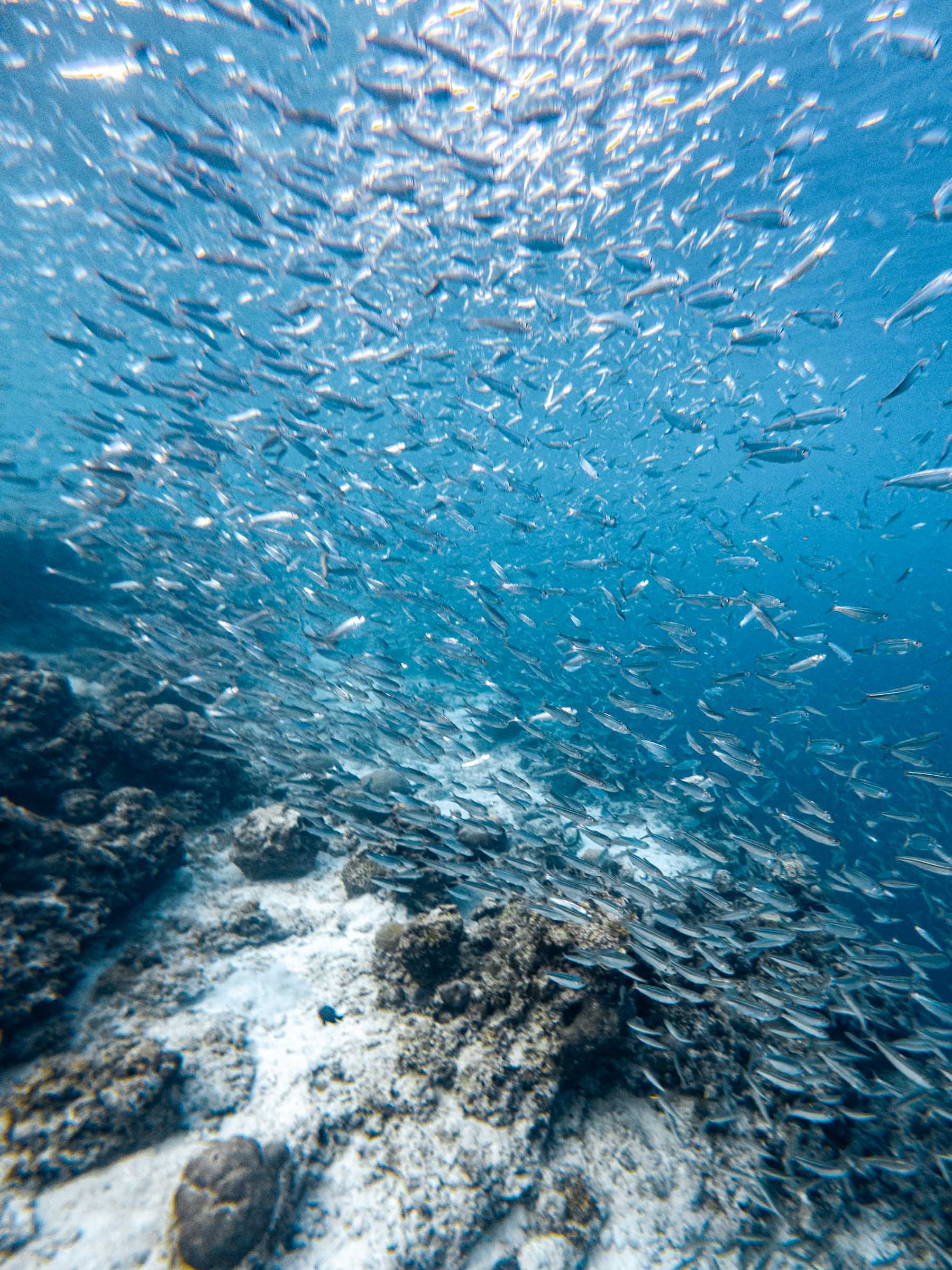
She motioned for me to come over, but at first, I didn’t see anything. Then suddenly, I saw it—thousands of tiny silver fish, shimmering in the sunlight, twisting and moving in perfect unison. It was mesmerizing.
We took a few dives, swimming alongside them. At one point, I found myself circling the sardines like a sheepdog herding its flock—something I never thought I’d do with fish.
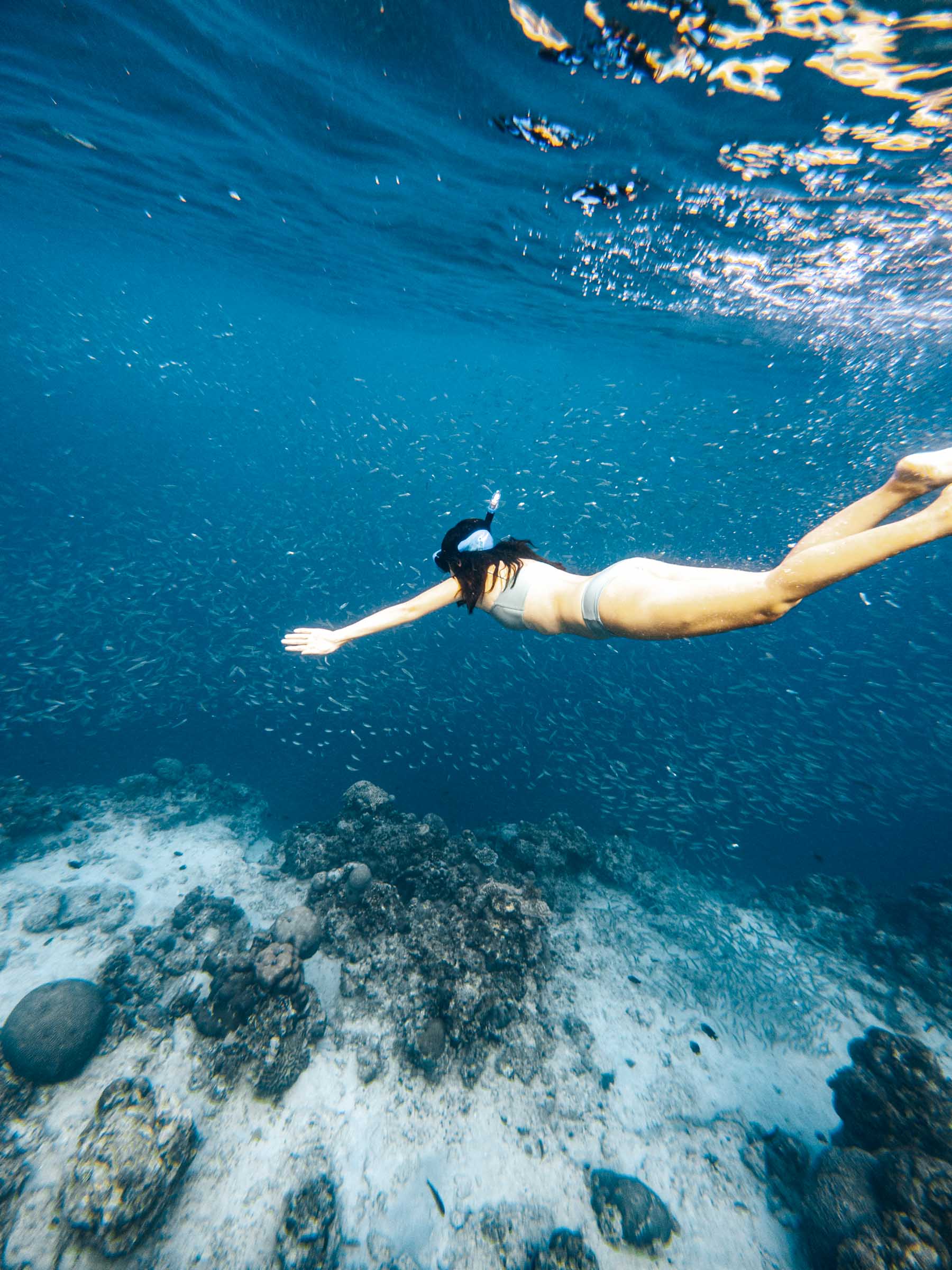

Then, an unexpected visitor showed up.
A sea turtle, fresh from grazing on the reef, swam by to check us out. Strangely, the sardines seemed far less afraid of the turtle than they were of us. No surprises there.
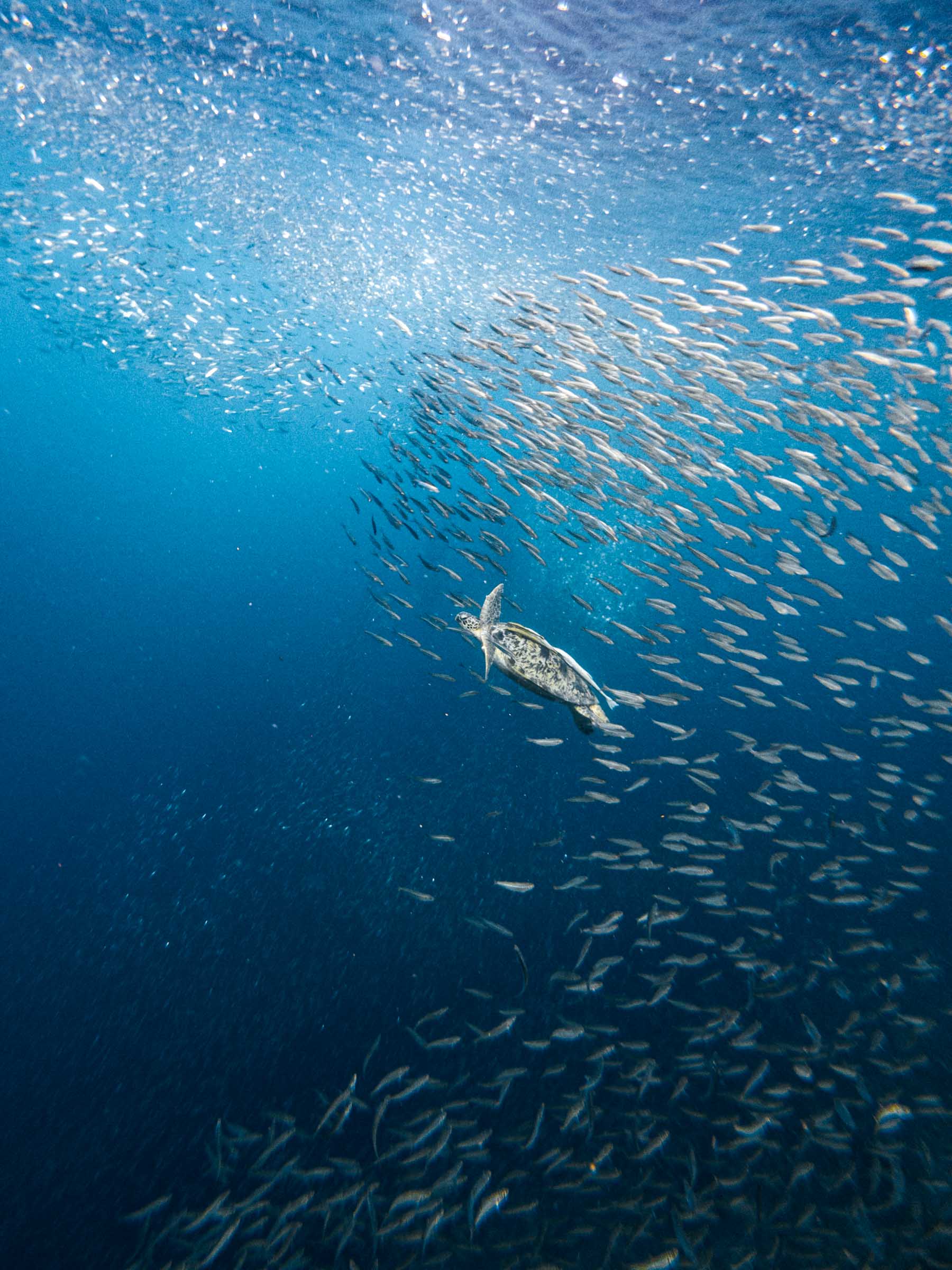

As the morning went on, I noticed something interesting. The sardines were gradually moving further from shore, out into deeper waters.
At first, I thought it was because of our presence, but later I learned that as the water temperature rises, the sardines instinctively migrate to cooler waters. Maybe it was a bit of both.
By then, tour groups had started arriving, and the once-empty ocean was filling up fast. And to be honest, we were starving. In our rush to be the first ones in the water, we skipped breakfast. Oops.
We swam back to shore, grabbed our things, and just as we were leaving, we saw the first waves of snorkelers and divers piling in.
We felt lucky. For a moment, we had the sardine run nearly to ourselves. But now it was someone else’s turn.

Moalboal Sardine Run facts
I enjoyed watching this video of an interview with Prof. Kent Carpenter about his take on the Moalboal Sardine Run from a biological standpoint. Here are some of his fun facts:
- The Moalboal Sardine Run is technically not a sardine run. The sardines in Moalboal are a resident population that remains near the shore year-round. It is not a true sardine run because they are not on the run from predators.
- The “run” contains multiple species of fish. The school consists of at least three species of sardines and at least two species of jackfish. Some predatory jacks also mix with the school.
- The sardines congregate around Moalboal to feed on the runoff from human activity.
- The sardines may have adapted to see snorkeling and diving humans in the water as a form of protection from predators.
Where to Stay in Cebu
For most travelers, Moalboal is the best place to stay. It’s close to the Sardine Run, White Beach, and within range of Kawasan Falls Canyoneering.
Moalboal has a good mix of resorts, hostels, and food spots, making it a solid base for exploring Cebu.
If you’re planning to stay longer than 5 days, I recommend doing what we did by splitting your time between Moalboal and Oslob.
Oslob gives you easier access to whale shark watching, Sumilon Island, and nearby waterfalls like Tumalog and Binalayan. This way, you cut down on travel time and get to see more.
Here’s where we stayed at and recommend in Cebu:
- Moalboal: 3 Sisters Guest House 2 is just off the main strip in Moalboal, but still within walking distance of everything. We appreciated the security and cleanliness of the accommodation and ate breakfast there every morning of our stay.
- Oslob: Melronz Inn is situated a bit outside the town center, making it quieter and more relaxed. And the best part is that it’s located right on the water, with its own private ocean access.
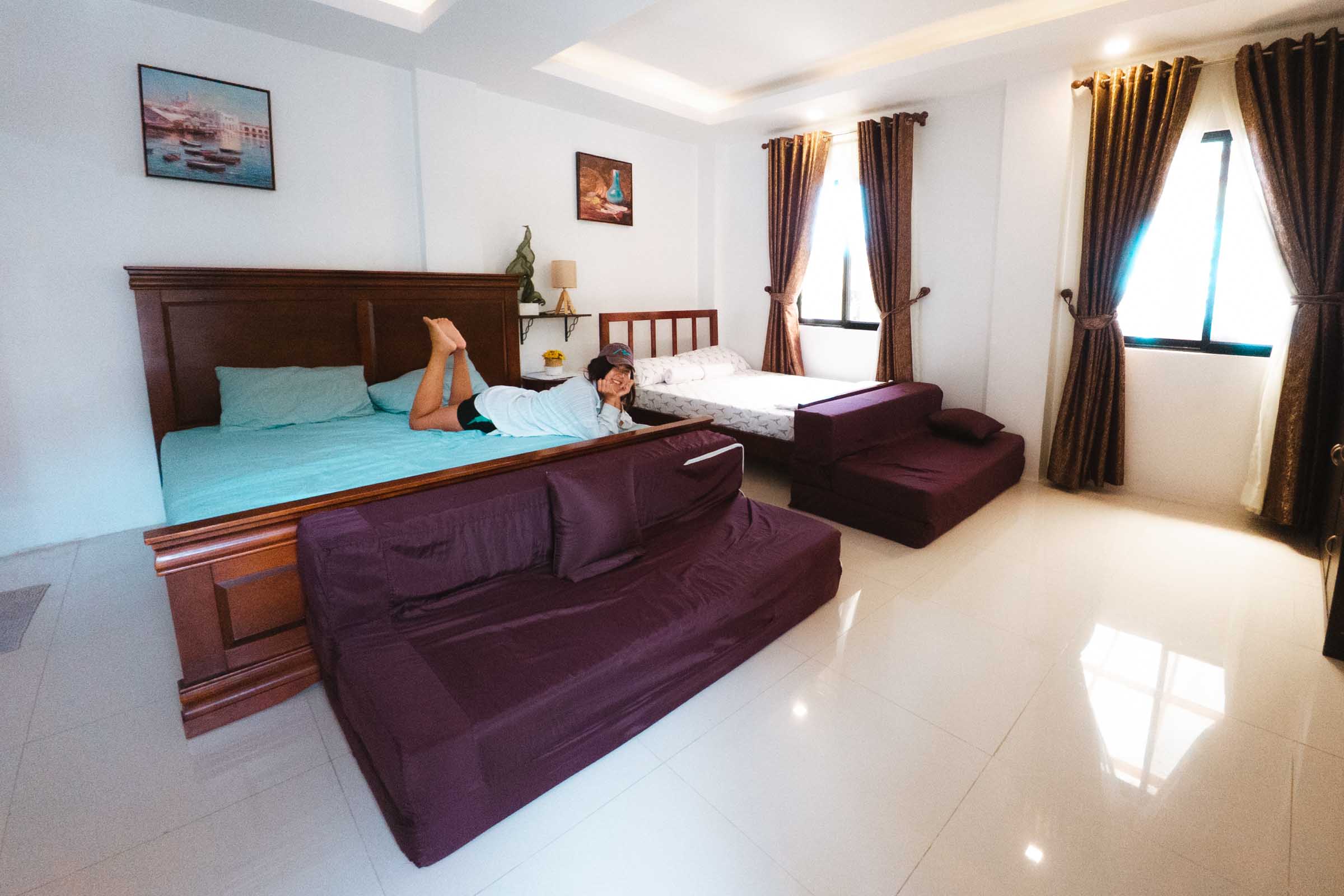
What to Pack for Cebu
- Water Shoes: If you plan to go canyoneering, a solid pair of water shoes like these are needed. If not, you can always wear crocs or even your sneakers if you don’t mind them getting wet!
- Snorkel: With sardine run in Moalboal and whale shark watching in Oslob, it helps to have your own snorkel set like this one for the best experience! Plus, you won’t need to worry about renting a snorkel, which may be of… questionable quality.
- Sunscreen: For some reason, sunscreen is expensive in the Philippines and I’ve even encountered places selling fake sunscreen that doesn’t work! So I recommend bringing your own sunscreen to Cebu.
- Dry Bag: With all the sand, salt, and water flying everywhere during our adventures, I was so glad to have a dry bag to keep all my things safe from the elements!
- Travel Towel: In my opinion, a travel towel like this one is super necessary for a trip to Cebu! It packs down nicely and was there for me anytime I went swimming, or just needed to brush sand or dirt off.
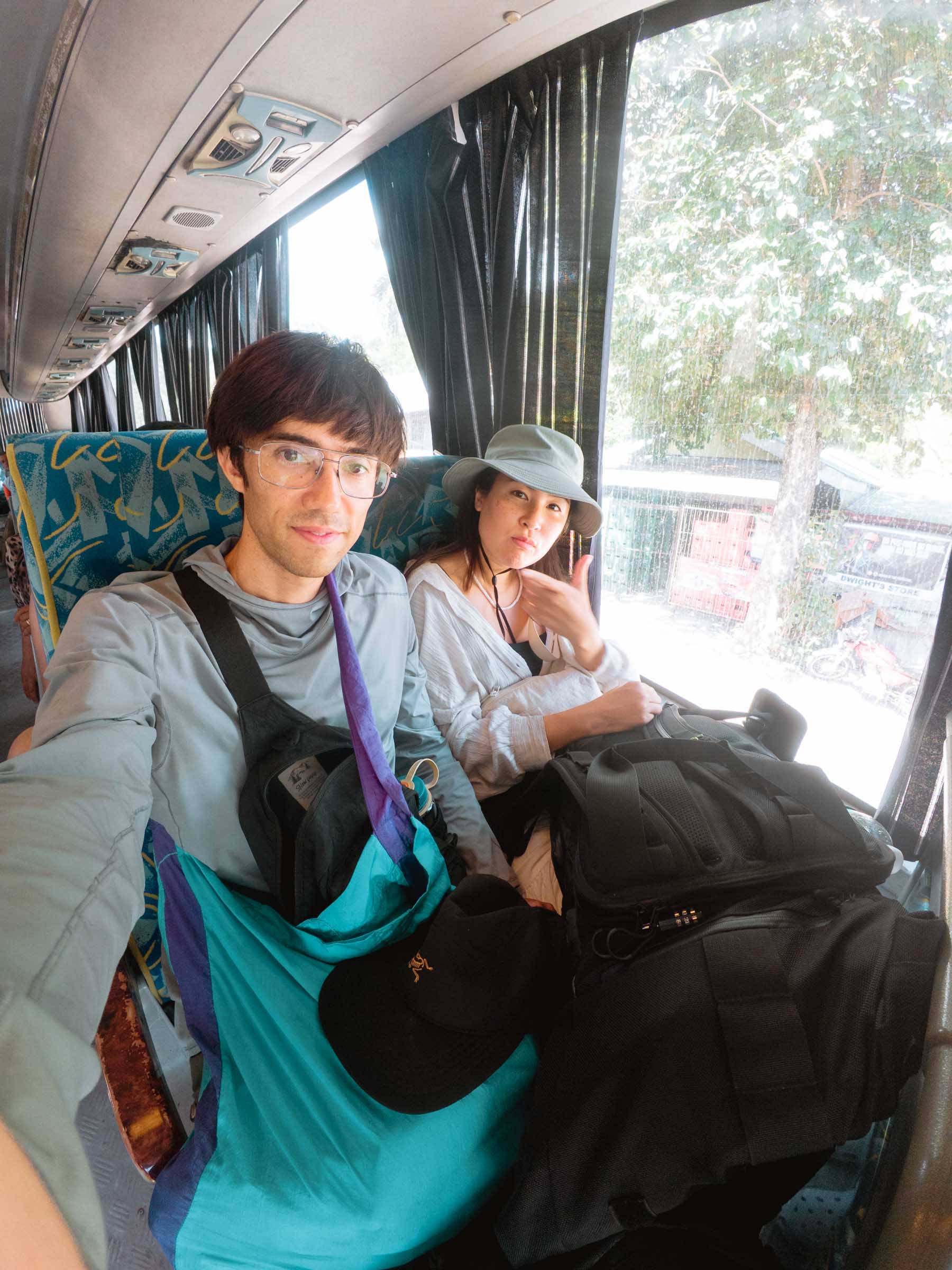
Our Free Cebu Google Maps Locations
Want a free map of all of the locations mentioned in this post? Sign up in the box below and we’ll deliver one right to your inbox, plus our top tips to help you plan your Cebu trip!
Need more Cebu travel ideas?
During our 7-day adventure in Cebu, we found some of the island’s most stunning natural wonders—milky blue waterfalls, limestone hikes, and incredible snorkeling spots. To help fellow adventurers, we’ve put together guides to the best places we found. You can check them out by clicking the links below.
- Start your planning here: Cebu Travel Guide
- Our Ultimate Guide to Cebu: 15 Incredible Things to Do in Cebu
- How to plan your Cebu vacation: Cebu 3 Day Itinerary
- Our Moalboal accommodation guide: Where to Stay in Moalboal
- Our favorite waterfall (+ secret adventure) in Cebu: Inambakan Falls
- Hike to the highest point in Cebu: Osmeña Peak
- Our favorite hike in Cebu: Casino Peak
- Our favorite day tour in Cebu: Kawasan Falls Canyoneering
- The hottest hot spring we’ve ever visited: Mainit Hot Spring
- How to see the Moalboal Sardine Run without a tour
- Oslob Whale Shark Watching Complete Guide
- How to get from Cebu City to Moalboal
- How to get from Moalboal to Oslob
- How to rent a motorbike in the Philippines

I hope you enjoyed our guide to the Moalboal Sardine Run in Cebu! Feel free to leave a comment below if you have any questions 🐸

